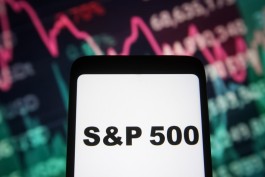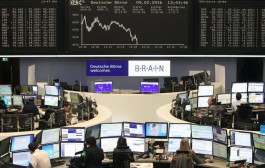The September CPI will be the latest test of whether inflation will continue to ease as the Federal Reserve debates its next interest rate decision.
The report, due at 3:30 p.m. ET on Thursday, is expected to show annual inflation at 2.3%, a slowdown from August’s 2.5% annual increase, the lowest since early 2021. On a monthly basis, prices are expected to have risen 0.1%, compared with a 0.2% increase in August, according to Investing Saudi Arabia data.
On a core price basis, which excludes more volatile food and gas costs, prices are expected to rise 3.2% year-on-year in September, the same as in August. Economists expect the monthly increase in core prices to slow slightly, estimating a 0.2% gain from August’s 0.3% increase, according to Investing Saudi Arabia data.
The Federal Reserve Turns Attention to the Labor Market
Although inflation is slowing, it is still above the Federal Reserve's target of 2% on an annualized basis.
However, the Fed has recently turned its attention to the state of the labor market, which has shown unexpected resilience in the face of higher interest rates.
Data released by the Bureau of Labor Statistics on Friday showed the labor market added 254,000 jobs in September, a gain that exceeded economists' expectations of 150,000 jobs, while the unemployment rate fell to 4.1% from 4.2%.
The strong report has changed expectations for the path of interest rates, with the market now expecting a smaller 25 basis point cut in November rather than a larger 50 basis point cut.
“We think the Fed will find it difficult not to cut at all in November,” Veronica Clark, an economist at Citi, wrote in a note to clients on Monday. “We expect moderate inflation to persist and weaker labor market trends to return in the coming months, prompting officials to cut rates by 50 basis points in December after a smaller 25 basis point cut in November.”
Inflation and potential market volatility
However, a strong CPI reading could worry markets.
“Good news will be good for stocks as long as inflation doesn’t pick up again,” Oh-sung Kwon, equity strategist at Bank of America, wrote on Monday. “After last Friday’s strong jobs report, we think the importance of this week’s CPI has increased.”
He added, warning: While stocks should be able to withstand a slight surprise in higher inflation given improving economic data, a big surprise could lead to uncertainty about the easing cycle and increased market volatility.
Inflation in the housing and basic services sector
Core inflation remains significantly high due to rising costs of housing and basic services such as insurance and health care.
Veronica Clarke of Citi said: “We see some risk of strong inflation in large components such as homeowners’ equivalent rent compared to our expectations. Homeowners’ equivalent rent is the hypothetical rent that a homeowner would pay on the same property.
Bank of America (NYSE:BAC) added that continued inflation in rents and increases in the prices of out-of-home accommodations, used cars, and airline tickets could translate into a stronger core CPI reading in September on a monthly basis, after the latter two categories saw prices decline in August.
“While we expect core CPI to be stronger than the recent September reading, our forecast does not change our medium-term view of further disinflation,” wrote economists Stephen Juneau and Jisoo Park at Bank of America in a review of the data. They noted that a cooler labor market coupled with stabilizing inflation expectations should keep inflation on a disinflationary trajectory.
However, the duo added some potential risks, including East Coast port strikes, higher oil prices, and higher shipping costs. “We believe these risks will contribute to a more gradual decline in inflation than we currently expect,” they said.






































